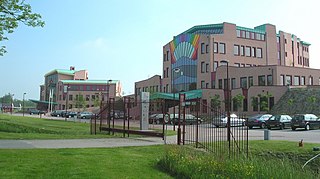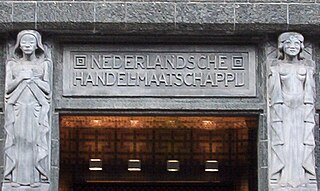 W
WAlgemene Bank Nederland (ABN) was a Dutch bank that became one of the main predecessors in ABN AMRO. It was created in 1964 when the Nederlandsche Handel-Maatschappij merged with De Twentsche Bank. In 1991 ABN Bank merged with AMRO Bank to form ABN AMRO Bank.
 W
WAMRO Bank was a major Dutch bank that was created from the merger of the Amsterdamsche Bank and the Rotterdamsche Bank in 1964. Its name comes from the first two letters of the two originating banks. It went on to become one of the two main predecessors to ABN AMRO bank when it agreed to merge with Algemene Bank Nederland (ABN) in 1991.
 W
WThe Bank of Amsterdam was an early bank, vouched for by the city of Amsterdam, and established in 1609. It was the first public bank to offer accounts not directly convertible to coin. As such, it can be described as the first true central bank. Unlike the Bank of England, established almost a century later, it neither managed the national currency nor acted as a lending institution ; it was intended to defend coinage standard. The role of the Wisselbank was to correctly estimate the value of coins and thus make debasement less profitable. It occupied a central position in the financial world of its day, providing an effective, efficient and trusted system for national and international payments, and introduced the first ever international reserve currency, the bank guilder. The model of the Wisselbank as a state bank was adapted throughout Europe, including the Bank of Sweden (1668) and the Bank of England (1694). David Hume praised the Bank of Amsterdam for its policy of 100 percent specie-backed deposit reserves.
 W
WDSB Bank was a Dutch bank and insurer that failed in 2009. Its loans were managed under Quion from June 2013 until June 2016 when Finqus began operating as the former DSB Bank. In 2018 Finqus BV took over DSB Bank and operated as a subsidiary of DSB Group. Finqus BV turned over its loan portfolio to NIBC Bank on 21 July 2021.
 W
WHope & Co. is the name of a famous Dutch bank that spanned two and a half centuries. Though the founders were Scotsmen, the bank was located in Amsterdam, and at the close of the 18th century it had offices in London as well. The bank was famous for having as their most important client Catherine the Great of Russia, the King of Portugal and having played a major part in the finances of the Dutch East India Company (VOC) through Henry Hope. The Hope Family were among the richest men in Europe at the time. .
 W
WLippmann, Rosenthal & Co. or Liro was a Dutch Jewish bank, located at the Nieuwe Spiegelstraat in Amsterdam. During the second World War, the Nazi government of Germany used the name of the bank for a separate branch, used for looting Jews, located at the Sarphatistraat.
 W
WThe Nationale Handelsbank was a Dutch bank that was established to financing trade between the Netherlands and the Dutch East Indies. After operating independently for nearly a hundred years, the parts in Indonesia, were nationalized by the Indonesian government. The remainder was acquired by the Rotterdamsche Bank in 1960 and would be absorbed into AMRO Bank.
 W
WThe Netherlands Trading Society was a Dutch trading company established in 1824 by King William I of the Netherlands to promote and develop trade, shipping and agriculture. For the next 140 years the NHM developed a large international branch network and increasingly engaged in banking operations, and subsequently would become one of the primary ancestors of ABN AMRO.